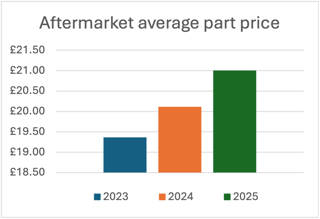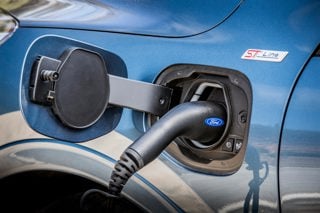The shortage of supply of semiconductors and microprocessors is having a profound impact on the global automotive sector – with the first financial evidence of this impact expected to be seen in the OEMs’ Q2 2021 results, following a surprisingly robust set of Q1 performances.
The causes of the shortage are linked to both COVID related issues but also changes to our working patterns.
In a global market for semiconductors worth over $400 billion, the automotive market accounted for 12% of global demand, a distant fourth behind the communications, computers and consumer electronics segments. Lead times are often six months and longer.
When the OEMs dialled down requirements in 2020 due to the forecast COVID impact on new vehicle demand, those chips were swallowed up by other fast-growing sectors.
This will, of course, remediate itself over time.
For now, however, one of the big challenges facing the sector is its extended supply chains.
OEMs typically have good visibility over their tier 1 supplier base, but quickly lose that visibility when it comes to tiers 2 and below.
This is part and parcel of how the OEMs allow their tier 1 suppliers to manage sub-suppliers, with low levels of directed supplies.
But this also means the OEMs have limited or no control when a problem arises. Instead, they are largely reliant on the tier 1 to fix the problem.
The shortages are now resulting in the production and supply of new vehicles to the market to be restricted, which in turn, is leading to increased demand for used cars.
Quick fixes
So what mitigating actions can be taken?
The first, and most obvious, is to focus the scant resource at those vehicles most in demand and which make the OEMs the most profit.
Plant closures or reduced production volumes often create significant challenges throughout the supply chain, which is dependent on long term visibility on production volumes.
To date, we have seen little in the way of supplier distress as a result of reduced volumes, largely due to suppliers still being able to take advantage of local government support packages, such as placing workers on furlough or short-time working schemes.
OEMs could also de-specify the vehicles they are making, in order to reduce the quantity of chips required for each vehicle.
As an example, an analogue speedometer may be easier to source than the chips required for a digital display.
Taking such actions will help the manufacturers keep a flow of new vehicles entering the dealer networks.
It is then important for the dealers to play their part and sell what’s available - not just what’s on the customer’s wish list.
Nevertheless, this approach could prove tricky throughout Europe where many customers orders are bespoke as opposed to selling standard trim models from the forecourt.
It will also be interesting to see what effect this de-specification will have on used cars and residual values in three years’ time.
Longer term challenges
The OEMs are used to having strength in the customer-supplier relationship but, equally, have largely stayed away from directing their tier 1 suppliers who are responsible for managing relationships below them.
Full supply chain visibility has long been the utopia for OEMs but is incredibly difficult to achieve with the current supply chain structure and typical customer-supplier relationships with the tier 1s.
Just in Time (“JIT”) manufacturing is also under question. For all its benefits in terms of minimising working capital throughout the supply chain, this crisis has exposed its flaws and weaknesses.
Another change could see car companies taking more direct control for certain key commodities, such as semiconductors, rather than relying on their tier 1s.
Again, this may help with forecast demand planning, and may also drive different customer-supplier relationships – moving them more towards long term take-off agreements.
Could an OEM go as far as investing in its own chip manufacturing capabilities?
Vertical integration has not been an OEM strategy for many years, but this crisis may change that thinking.
For example, we have seen Robert Bosch, the largest tier 1 supplier, announce it will build its own semiconductor manufacturing facility.
The problems that semiconductors have created and exposed in the OEMs’ supply chains today have highlighted a similar risk for them with batteries and their need to electrify their product ranges.
Thierry Bollore, CEO of Jaguar Land Rover, stated in a recent interview that it “intends to take more direct control of mission critical parts such as microprocessors and electric batteries”.
Will we see auto OEMs looking to buy mines that produce lithium and cobalt for example? Or will we see them forge global alliances with the large mining companies?
While we expect the current chip shortages to ease in the remaining months of 2021, it is not expected to be fully resolved until the first half of next year.
The impact on suppliers has been limited to date and has potentially been masked by government support programmes.
It is also impacting the used car market where demand and residual value prices are in unprecedented territory.
The shortages have made the OEMs sit up and think about their procurement processes and strategies, and also about the visibility they have through the supply chains.
We anticipate OEMs to take a greater degree of control over key commodities and components in the future and build in additional levels of safety stocks to cushion against future supply chain disruption.
Author: Andrew Burn, head of automotive, Interpath Advisory


















Login to comment
Comments
No comments have been made yet.